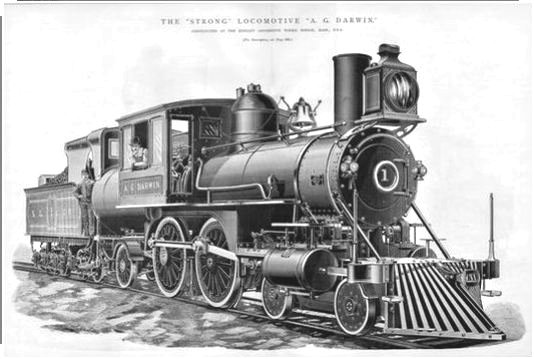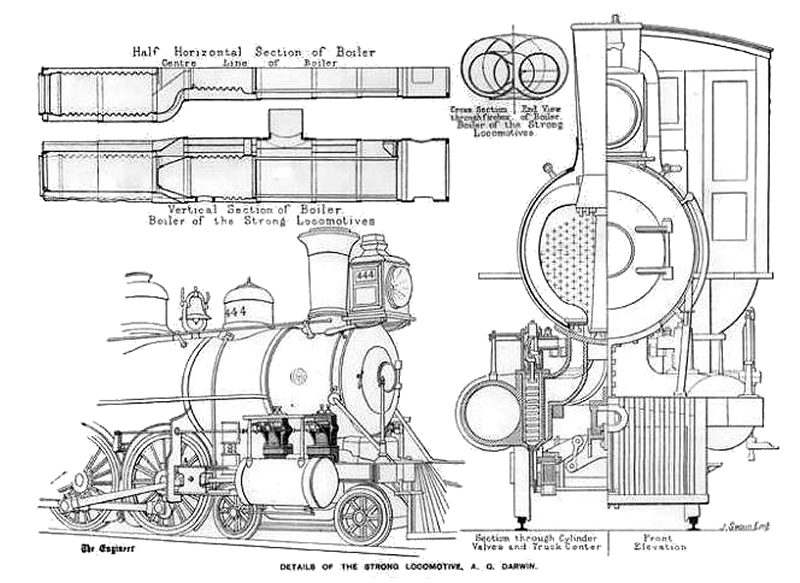Gallery opened: Sept 2016
Updated 31 Mar 2022
Sectional drawing added




The Strong Duplex Boiler |
Gallery opened: Sept 2016 |
George S Strong was a mechanical engineer of Philadelphia, Pa, who introduced an unusual boiler with twin fireboxes made of corrugated steel plates with welded longitudinal seams, in contrast to the usual flat plates supported by stays. The fire boxes met in a Y-shaped junction that led to single combustion chamber, which in turn led the gases to a conventional fire-tube boiler section fitted with 235 tubes. Most of this construction was basically cylindrical in shape to resist the boiler pressure. The original idea of using corrugated tubes in boilers was due to Samson Fox, an English engineer.
Scientific American for 12 January 1889, took an optimistic view of the project:
"The corrugated furnace chambers have, as our readers know, been extensively introduced in marine boilers. They have effected important economy in this service, as higher pressures can be carried than with the old style flat-sided structures. They have co-operated with the compound engine to bring down the coal consumption to the very low point it has now attained in good practice. Its introduction on a locomotive is a step in the right direction, comparable to compounding the cylinders."
However, it was remarked rather cruelly by Angus Sinclair in 1907 that:
"Although the Fox corrugated flue was found very frequently in marine practice, and had been to a limited extent adapted to locomotives in Germany, it has not been a success on American locomotives. The engine was a failure, and was a good illustration of what an amateur will do when he undertakes to design a locomotive."
Strong's first engine was a 4-4-0 No 383 built at Wilkes-Barre, Pa, in 1885; this had a conventional flat-sided firebox and was used to test Strong's valvegear inventions.
The second was 4-6-2 No 444 "Duplex"
A later engine was the 4-4-2 "A G Darwin", built in 1888
 | Left: The Duplex locomotive No 444: 1886
|
 | Left: The A G Darwin: 1888
|
 | Left: The A G Darwin: 1888
|
 | Left: The A G Darwin: 1888
|
 | Left: The A G Darwin: 1889
|
 | Left: The A G Darwin: 1888
|
 | Left: Part of an article on the George Strong locomotives
|

  
|